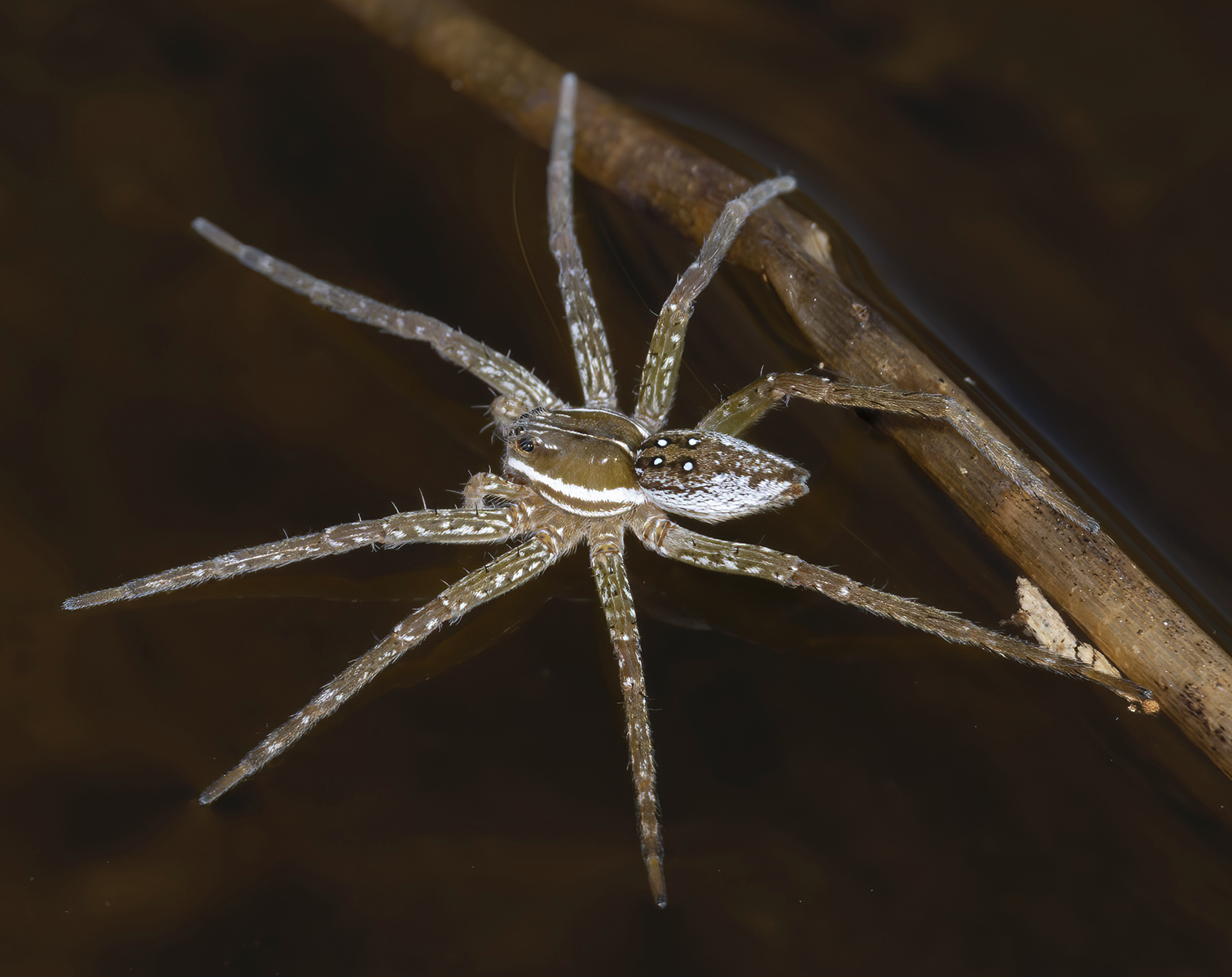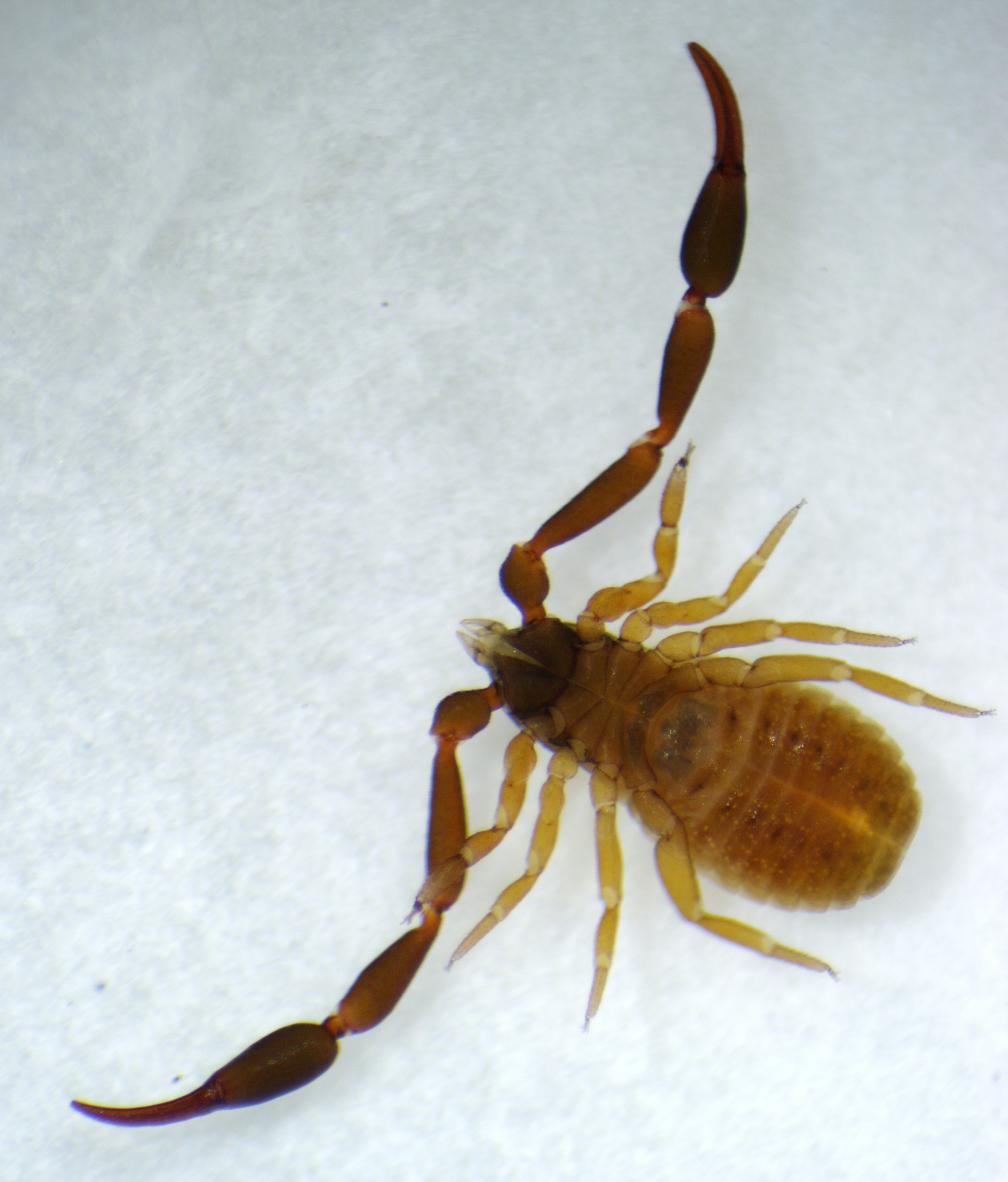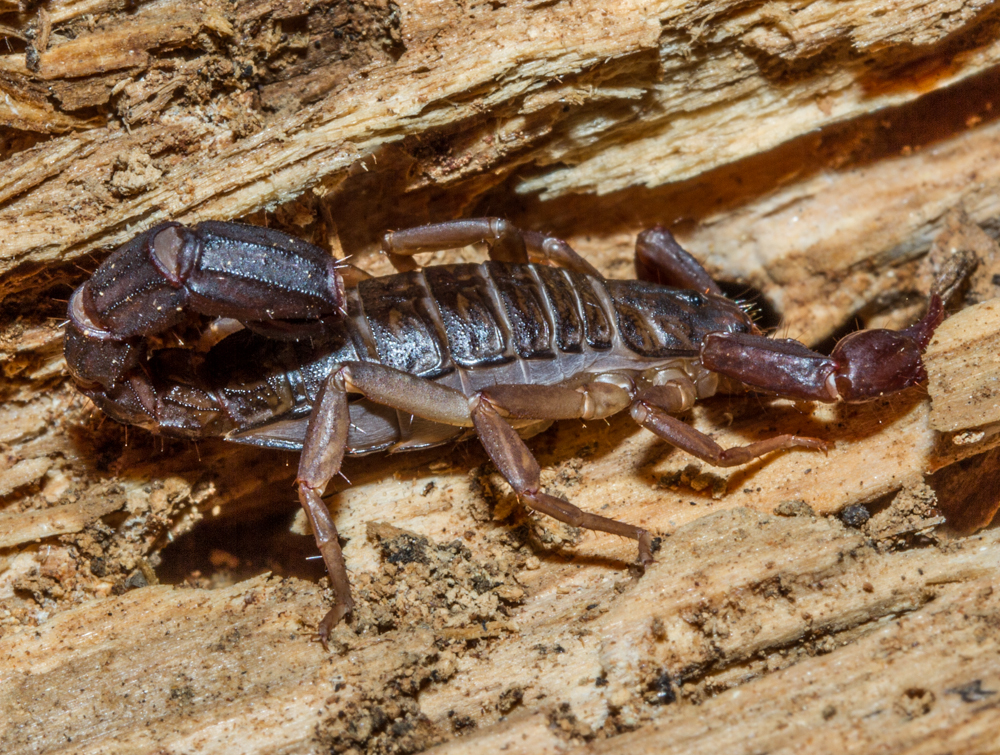Arachnids
Arachnids are a diverse and interesting group of invertebrates. While spiders are no doubt the best known order in the class Arachnida, there are several other orders recognized, the jury being still out on exactly how many orders Arachnida actually comprises. In North Carolina, a few of these non-spider orders one might expect to encounter include: pseudoscorpions, scorpions, mites and ticks, and harvestmen (sometimes referred to as "daddy longlegs").

Among the arachnids, spiders (order Araneae) are unquestionably the most familiar and most studied. At this writing, there are more than 51,400 spider species (including over 6,500 species of jumping spiders) in 135 families that have been described and named worldwide, with more coming nearly every day. The more readily obvious features that set spiders and the other arachnids apart from adult insects include their having 8 legs, rather than 6, and having two body segments, rather than the insects' three. Distinguishing them not only from insects, but the other arachnids as well, is their ability to produce silk from abdominal spinnerets. All spiders produce silk: they use it in some combination of capturing prey, protecting their eggs, providing shelter, finding mates, and dispersing via airborne "ballooning."
 Pseudoscorpions are a fascinating but poorly known group of arachnids. They are distributed widely but seldom seen because of their tiny size and secretive habits. They are predators, many with venom in their scorpion-like palpal fingers, but they are too tiny to pose any threat to people or domesticated animals. They have a distinctive appearance, but are challenging to identify to the species level. Pseudoscorpions can be found in moist, sheltered places such as soil or leaf litter, rotten logs, under bark, in compost, and under stones. They feed on the numerous springtails and other tiny creatures in these habitats. Like many predators, pseudoscorpions have relatively small broods of young. Twenty to forty eggs are carried under the mother's abdomen, and the young ride along for a while after they hatch. To distribute themselves from place to place, tiny pseudoscorpions will use their pedipalps to grip on to the leg or body of a fly, beetle, or moth, and hitch a ride to a new home.
Pseudoscorpions are a fascinating but poorly known group of arachnids. They are distributed widely but seldom seen because of their tiny size and secretive habits. They are predators, many with venom in their scorpion-like palpal fingers, but they are too tiny to pose any threat to people or domesticated animals. They have a distinctive appearance, but are challenging to identify to the species level. Pseudoscorpions can be found in moist, sheltered places such as soil or leaf litter, rotten logs, under bark, in compost, and under stones. They feed on the numerous springtails and other tiny creatures in these habitats. Like many predators, pseudoscorpions have relatively small broods of young. Twenty to forty eggs are carried under the mother's abdomen, and the young ride along for a while after they hatch. To distribute themselves from place to place, tiny pseudoscorpions will use their pedipalps to grip on to the leg or body of a fly, beetle, or moth, and hitch a ride to a new home.
 Scorpions are an iconic group of arachnids. Their combination of claws (grasping pedipalps), eight legs, and elongate body with a segmented tail ending in a venomous spine is distinctive. Ancient astronomers were even able to discern the shape - Scorpio - among the stars. Scorpions are found naturally on all major land masses except Antarctica and some island nations. However, they have been accidentally introduced to most of the developed world by hitchhiking among agricultural products. There are more than 2,800 described species and subspecies. All scorpions are predatory, mainly capturing small invertebrates. They are nocturnal, spending the day in holes or undersides of rocks, and emerging at night to hunt and feed. The three species (1 native, 2 introduced) reported for NC have venom with low toxicity to humans. The venom is a neurotoxin and fast-acting. However, most often scorpions kill their prey by crushing with their pedipalps.
Scorpions are an iconic group of arachnids. Their combination of claws (grasping pedipalps), eight legs, and elongate body with a segmented tail ending in a venomous spine is distinctive. Ancient astronomers were even able to discern the shape - Scorpio - among the stars. Scorpions are found naturally on all major land masses except Antarctica and some island nations. However, they have been accidentally introduced to most of the developed world by hitchhiking among agricultural products. There are more than 2,800 described species and subspecies. All scorpions are predatory, mainly capturing small invertebrates. They are nocturnal, spending the day in holes or undersides of rocks, and emerging at night to hunt and feed. The three species (1 native, 2 introduced) reported for NC have venom with low toxicity to humans. The venom is a neurotoxin and fast-acting. However, most often scorpions kill their prey by crushing with their pedipalps.